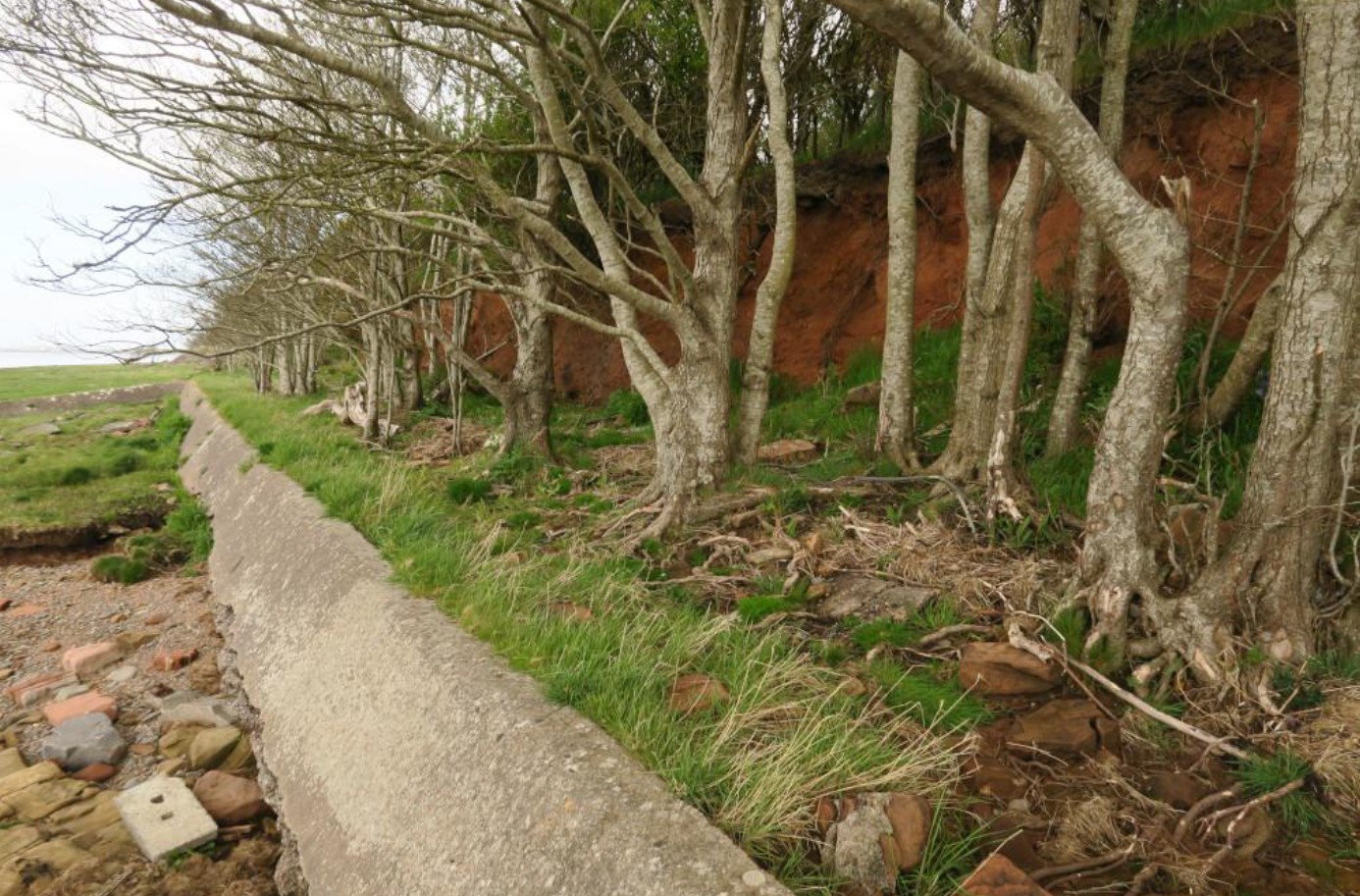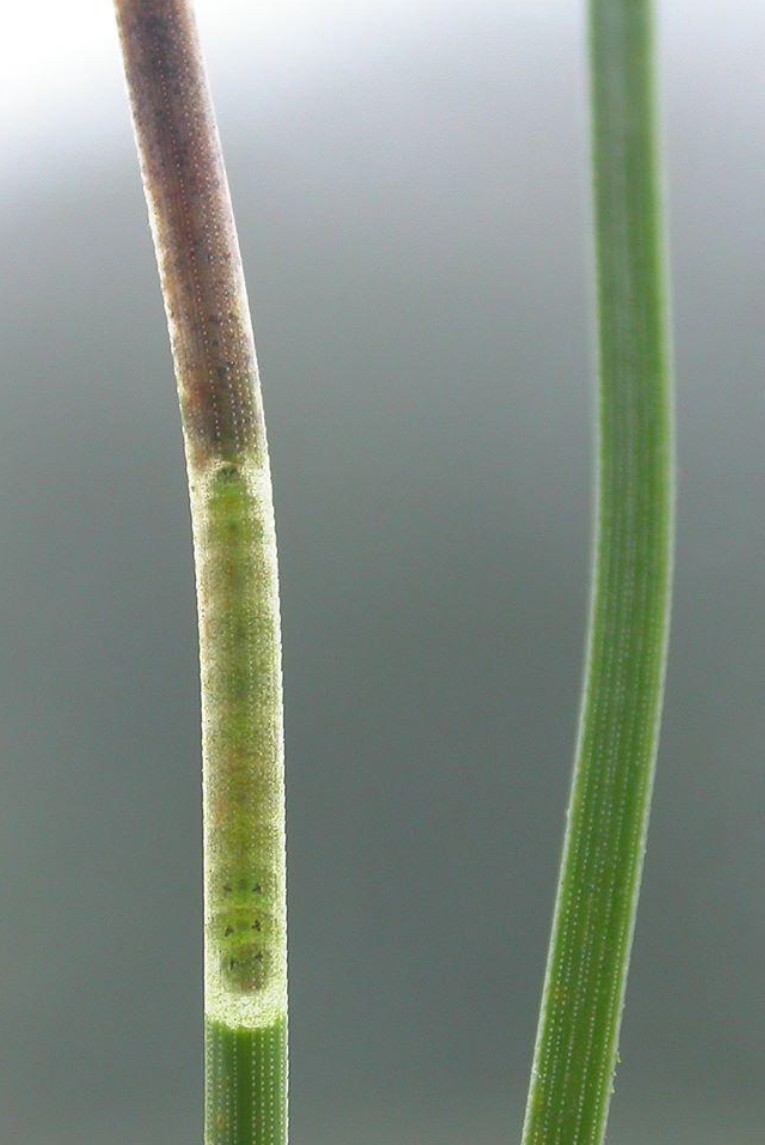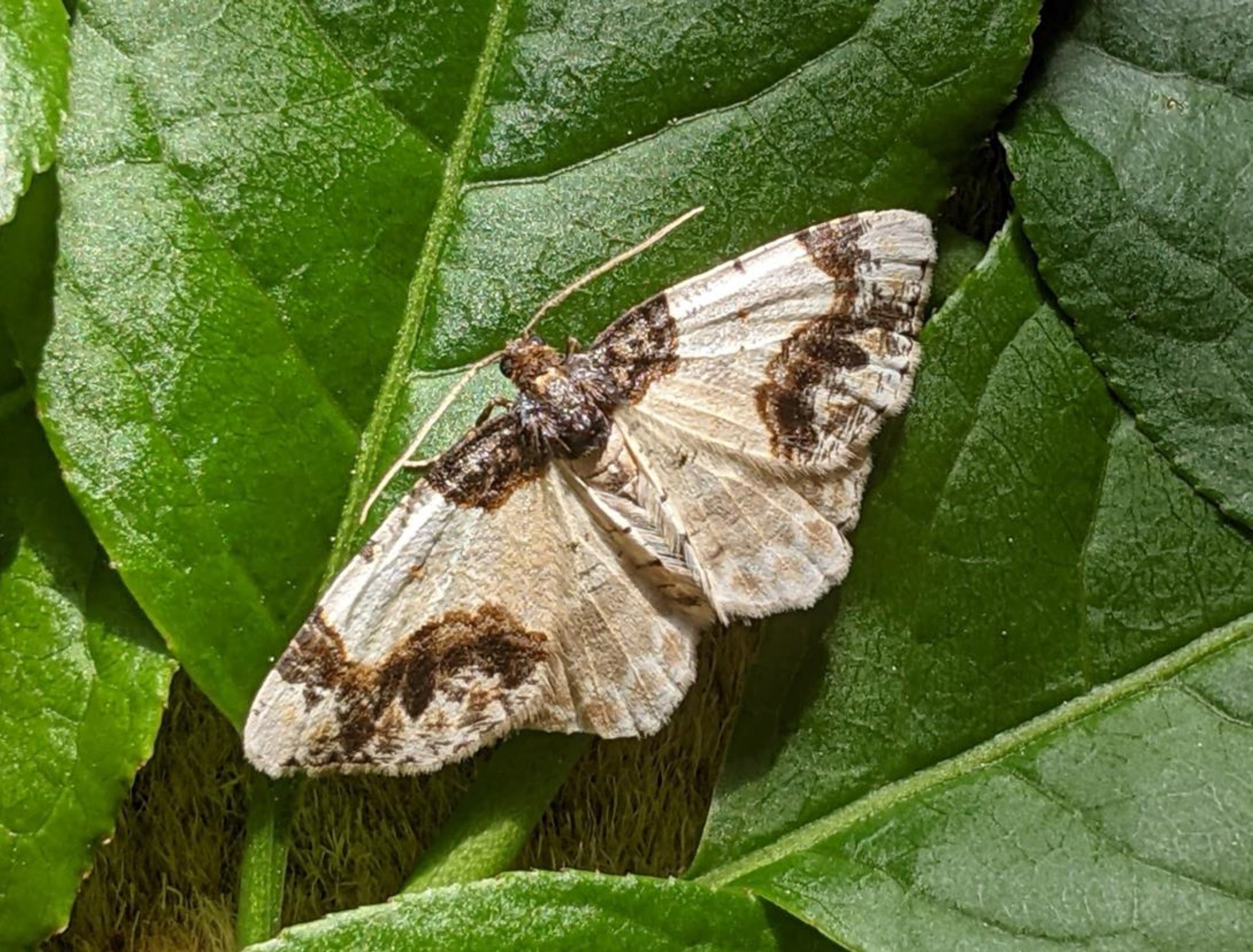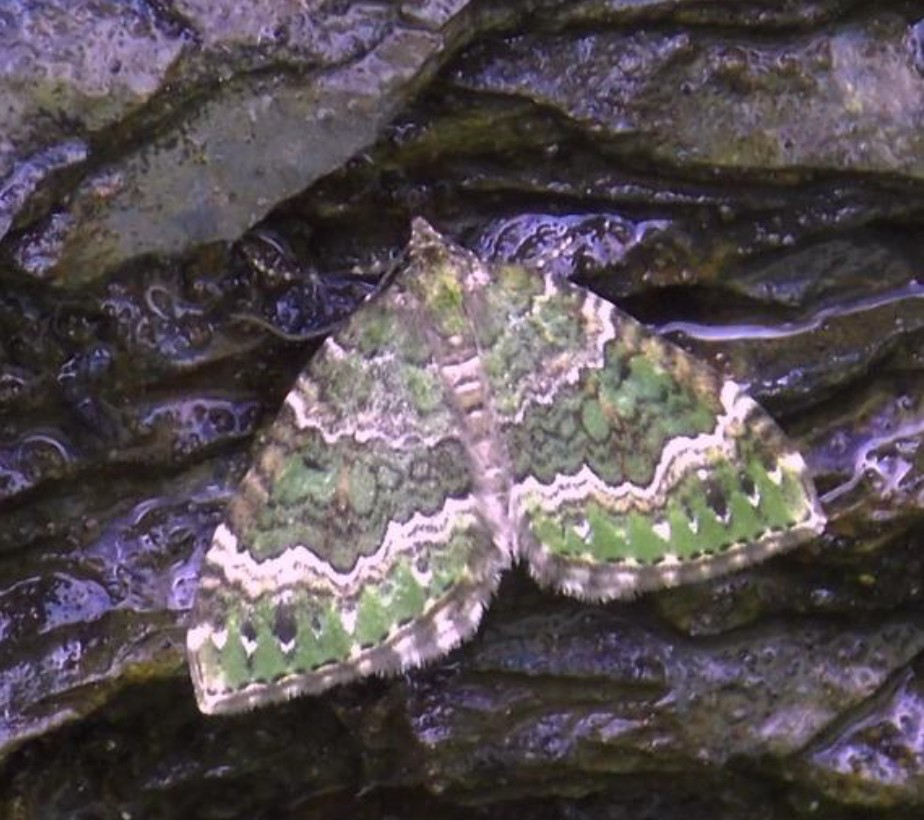This is another bagworm discovered by Richard Mearns this year (remember the Virgin Bagworm cases that Richard found last year and featured in a MotW?). This odd family of moths (Psychidae) all have caterpillars that live in movable cases rather like caddisflies. In this species the case is elongated, triangular in cross-section and made of sand particles and fragments of lichen on a silk base. At the ‘head end’ there are often bits of dead insect and it is thought that these caterpillars feed on insect remains from spider webs as well as on various lichens and algae. The details of how they feed and what their ‘habitat requirements’ are remain unknown as until recently there have been very few records of this moth in the whole of the UK.
The tiny adult moths emerge very early in the year and active males have been found in February and March. In this species the male, about 5-7mm long, is winged and the female wingless and is restricted to the place where the caterpillars have been feeding. This is not very unusual as many very early moths including macros have wingless females. What is particularly odd is that the males fly during the day in the morning and sharp-eyed Richard spotted this male flying in sunshine low over the shoreline debris at Torduff Point between Annan and Gretna. As the photograph below shows there appears to be nothing particularly special about this habitat and elsewhere in the UK larvae have been found on walls, rocks, tree trunks and fences. Richard did have a search around where he found the moths but could not see any cases so the exact nature of the habitat in D&G remains a mystery at the moment.
The picture across the UK is very confusing as this species must be regarded as very rare as this is the first record for Scotland and one of only nine areas where it has been found. Recent records have been from 1984 in Norfolk, with others from Kent, Yorkshire, Hampshire, Nottinghamshire, Worcestershire and Cardiff. In each county there are only one or two sites, with most records (33) from Hampshire. The Scarce Bagworm is known to be common in the Channel Isles and there may be a climatic component to its distribution although it is probable that this moth has always been resident in the UK.
Of course with such a moth as this one it is reasonable to think that it might have been overlooked and, therefore, under-recorded. The larvae are tiny and live in cryptically coloured and textured cases. The active males emerge during a brief period very early in the year and fly by day and would not be attracted to moth traps. However, now that we know that this moth is found in D&G hopefully there will be people who will want to test their field skills, and their eyesight, and discover exactly where this species lives and how widespread it is.





